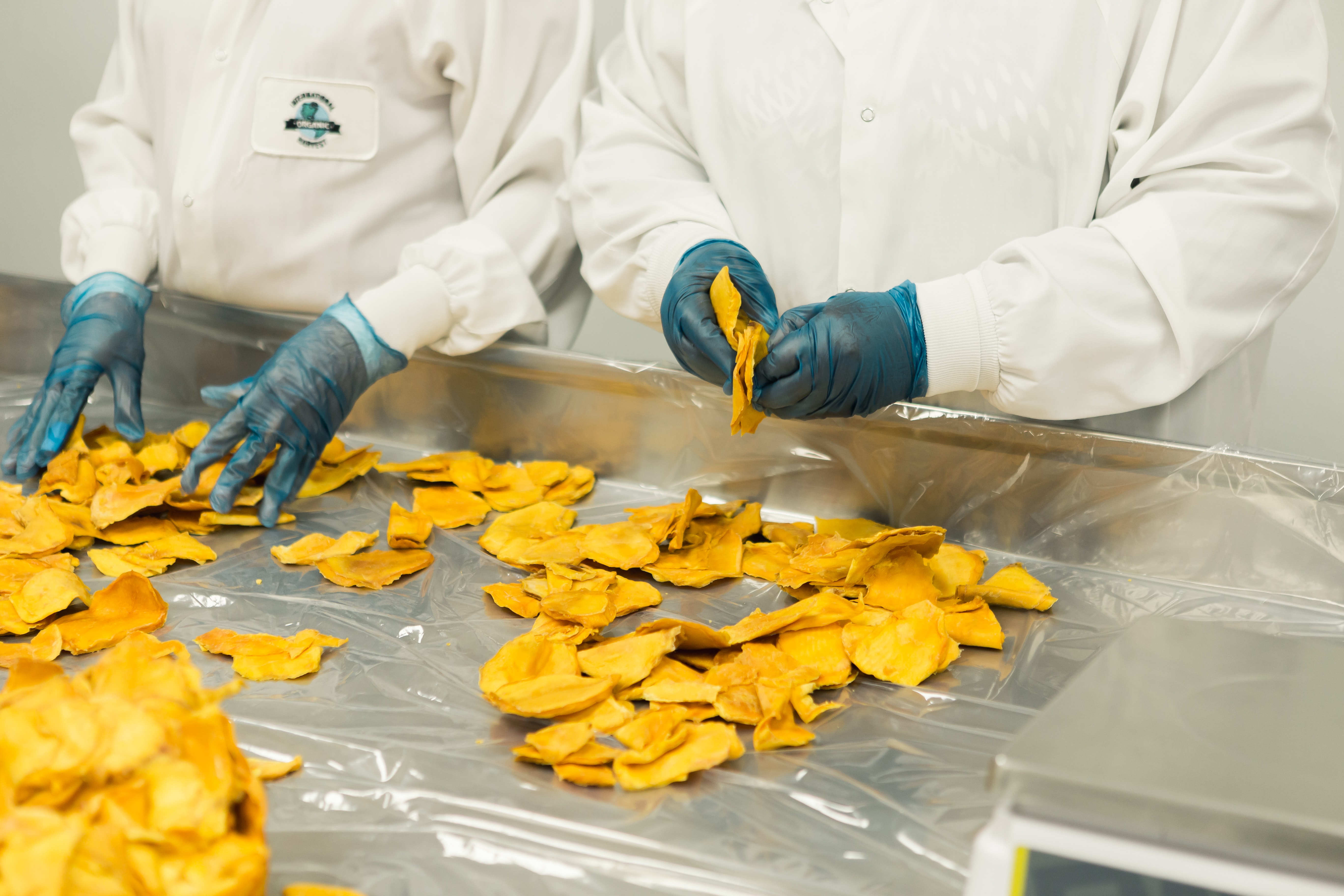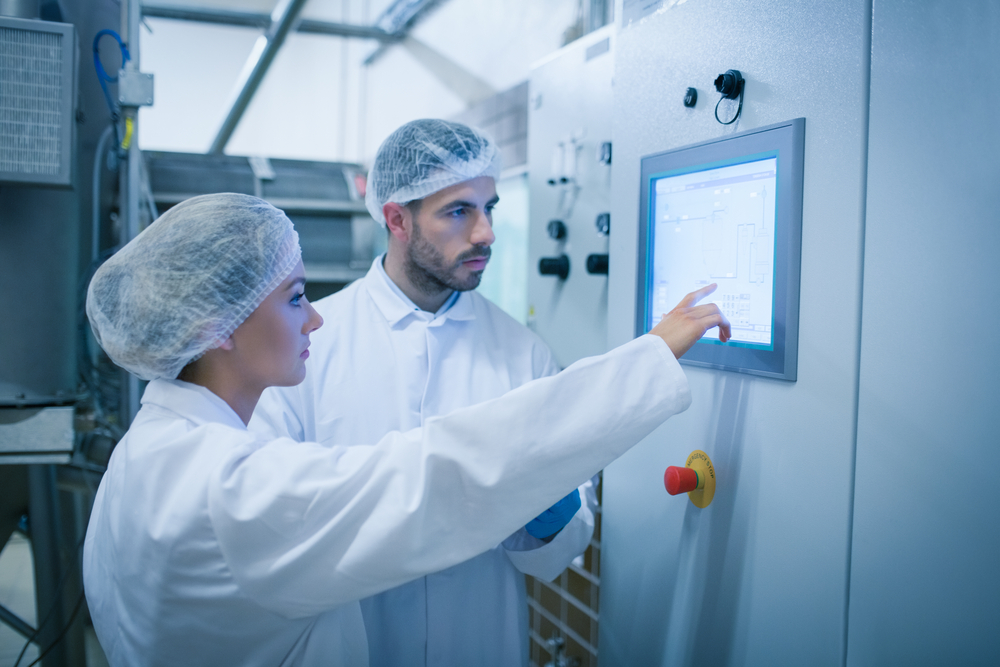We all know that by repeating the same process over and over again, the chances are you’ll get the same results. So, by that logic, if you keep doing the same thing in an ever-changing sector like the food and drink industry for example, the chances are you’ll probably suffer worse results.
That’s why you’ll reach a point when you’ll need to implement new technologies to move your business forward and increase profit margins.
In this blog, we list some of the signs that it’s time to invest:
- Your competitors are doing it
- You don't know your consumers as well as you'd like
- You're spending lots of time manufacturing and not seeing productivity increase
- You’re wasting products (and time)
- You’ve got software waste
- You’re struggling to keep track of industry regulations and standards
Your competitors are doing it
Many businesses are using the implementation of latest technology as a tool to remain competitive. Stay ahead of the curve by investing in new tech to open up a whole host of opportunities to your business.
For example, the past 12 months have seen more and more consumers moving towards purchasing their grocery shopping online, allowing food tech companies like HelloFresh and Ocado to grow at an exceptional rate.
Of course, it’s hard to say with any certainty how long this consumer trend will continue or when they may change again. With the latest tech, you can react quickly to any changes in consumer demands as your business will become more agile. Plus, you’ll offer more value than your competitors by consistently offering customers new solutions and ideas through software.
You don't know your consumers as well as you'd like
Consumer demands are constantly changing and in recent times, we’re seeing them wanting more information during the food and drink buying experience (e.g. its origins and journey to basket).
They’re also more health and environmentally conscious than ever before, resulting in a significant demand for products that are vegan/vegetarian, fair trade, organic, use sustainable packaging and so on.
By investing in new technology, you’ll gain access to deeper insights into your customers, helping you to keep up with their expectations and stay ahead.
Consumers are fickle with brand loyalty and will quickly move on from you to a competitor if your business doesn’t fit with their values.
So, gaining access to data on your customers, such as sales history, will allow you to analyse buying patterns and behaviours, making it easier to quickly adapt to potential demands or anticipate future purchases or needs.
You're spending lots of time manufacturing and not seeing productivity increase
To properly evaluate all your business processes, you’ll need to see what’s happening in real-time across your whole organisation. Without the right technology, it’s extremely difficult to gain an up-to-date view if you’re relying on people, spreadsheets and multiple, disparate and legacy systems.
For example, getting reports from your IT team on businesses processes will likely take several days, meaning the data you’ll be working off will already be outdated.
Technology like Aptean Food and Beverage ERP can connect all your systems together and feed data into one centralised location. Here, you can generate complex reports quickly, giving you an up-to-date view of your business processes.
This makes it easier to identify any areas that aren’t operating as efficiently as they should. Plus, you’ll be giving time back to your IT team who can spend more time on other business-critical tasks.

You’re wasting products (and time)
Food loss and food waste have huge implications on the environment and your business. This was recently highlighted in a UN report which revealed that 8-10% of global greenhouse gas emissions are associated with food that’s not consumed.
Many businesses fail to understand the full costs associated with food loss – every time food is lost or wasted, you’re throwing away valuable resources and your chances of increasing profits.
And then there’s the environment to consider as well. Resources such as water and energy are required to produce, move and store food – this has environmental impacts when products are lost due to poor practices, process/machine inefficiencies, transportation, etc.
New technology can help you reduce the impact of food loss and waste by managing supply and demand through the entire supply chain. A food-specific ERP software, for example, can make accurate predictions based on historic and current data to determine the amount of supply to bring in to meet expected demand levels.
You’ll also gain better visibility into pre, during and post stages of production. This way, you can check whether machines are operating as efficiently as possible. The right ERP system will automate your processes from raw material through to delivered goods, reducing the likelihood of human error.
Technology puts your business on a more sustainable path. For example, less product ‘left over’ means less product ending up in landfill or could mean fewer deliveries, helping you reduce carbon emissions.
You’ve got software waste
We’ve spoken a lot about investing in new technology already, but we strongly believe that picking the right technology for your businesses is just as important as implementing it.
For example, some businesses invest in the latest technology simply because it’s new and sounds great on paper. Unfortunately, this technology usually ends up becoming “software waste” due to it not being used properly or ignored altogether.
Software waste cuts into profits as the money spent on new tech could have been put towards other technology that the organisation actually needed. But unused software can be a waste to your business – regardless of whether it’s new or not – simply due to the fact that it’ll be sitting in a corner somewhere, gathering dust.
So, to keep your current tech operating at full efficiency and minimise the risk of software waste when implementing new technologies, you’ll need to:
- Conduct software assessments at least twice a year – each department in your business should clearly state how and why they need each tool. That way, you can identify any cases of duplication and act accordingly
- Focus on employee experience – many tech budgets end up as software waste because companies focus on the technology rather than the employees using it. Ensure your employees understand why the change is happening and empower them with the right tools
- Only buy the software your company really needs – any new technology purchased should be solving a core problem inside your business. Every purchase should have a clear link to a business objective

You’re struggling to keep track of industry regulations and standards
Similar to consumer trends, industry regulations and standards are always changing. For example, Natasha’s Law – a new labelling requirement – will be introduced in October 2021.
Failure to comply with new regulations like these can have serious consequences for your business –most notably, substantial fines and a damaged brand reputation.
To combat this, you’ll need to implement effective traceability and tracking. Technology solutions can gather and manage data from multiple sources, giving you increased visibility into your business processes and supply chain.
This makes it easier to track which materials are being used for what products, as well as monitor expiration dates of ingredients to enable better stock rotation and traceability.
Technology can also automatically calculate the ‘days-to-fresh’, ‘best used before’ and ‘sell by’ dates of products, plus trace items that are being brought in your manufacturing facility. Track and analyse raw materials from your suppliers with deeper insights into the quality of your products. Lot traceability can be automated, reducing the risks of human error like duplicate or missing data.
Can your business afford to stay still?
While you may be wondering if your business can afford to invest in new technologies, you also need to consider whether or not your business can afford not to invest?
Think of customer behaviour and consumer trends that can change at any time – is your company well equipped to deal with this?
That’s why many food and drink businesses are undergoing digital transformation to modernise their organisation structure. Click on the button below to read our guide to enhancing your business.
.jpg?width=100&name=JHAL%20headshot%20(2).jpg)
